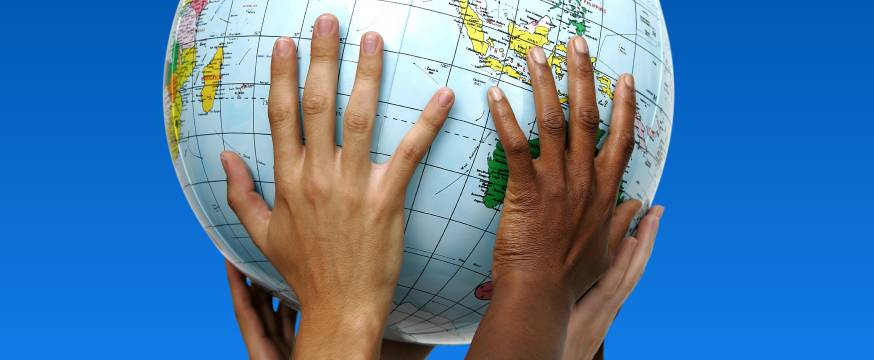
Indigenous student maths achievement in context
Research 3 Dec 2013 6 minute readThe 2012 Programme for International Student Assessment (PISA) provides an opportunity to examine the achievement of Australia’s Indigenous 15-year-olds in national, global and long-term context.
Managed by ACER at the national and international level for the Organisation for Economic Cooperation and Development (OECD), PISA measures how well 15-year-olds from across the globe are prepared to use their knowledge and skills in mathematics, reading and science to meet real-life challenges.
Around 2000 Indigenous students were included in the sample of almost 14 500 participating Australian students. These Indigenous students were from all states, and a variety of metropolitan, provincial and remote locations.
According to the lead author of Australia’s national report, PISA 2012: How Australia measures up, ACER’s Director of Educational Monitoring and Research, Dr Sue Thomson, the results show that little progress has been made in ‘closing the gap’ and improving outcomes for Indigenous students.
In mathematical literacy, Indigenous students performed at a significantly lower level than non-Indigenous students, and significantly lower than the OECD average. Similar results were found for both reading and scientific literacy.
In terms of number of years of schooling, on average, 15-year-old Indigenous students are performing at a level that is about two-and-a-half years behind their non-Indigenous counterparts. Dr Thomson said the ramifications of this for post-schooling outcomes are substantial.
‘In the competitive labour market, it is more likely that Indigenous students will be passed over simply because of their lower level of skills,’ Dr Thomson said. ‘Similarly, this lower level of skills will preclude many Indigenous students from entering TAFE or university courses, and for those that do achieve entrance, the lack of substantial numbers of other Indigenous students means that they may feel culturally marginalised.’
Looking at achievement over time, in mathematical literacy, the performance of Indigenous students remained stable between PISA 2003 and PISA 2009 before falling in 2012 by the equivalent of more than two-thirds of a year of schooling. In comparison, the achievement of non-Indigenous students has been in decline since 2003, but at a much slower rate such that it is equivalent to only around half a year of schooling.
PISA also reports on the proportion of students at each of the internationally agreed benchmarks of performance, or proficiency levels. The report shows that, in mathematical literacy, 40 per cent of non-Indigenous students and 77 per cent of Indigenous students are not achieving at the nationally agreed baseline of performance of proficiency Level 3, which is described by the Australian Curriculum, Assessment and Reporting Authority as a challenging but reasonable expectation of student achievement.
At the lowest end of achievement, 26 per cent of Indigenous students, compared to five per cent of non-Indigenous students, were not able to achieve Level 1 in mathematical literacy. Students placed at this level have demonstrated limited mathematical skills and are likely to have serious difficulties with numeracy in later life. At the other end of the achievement spectrum, the proportion of Indigenous students performing at the highest two proficiency levels declined from six per cent in PISA 2003 to two per cent in 2012.
Many Indigenous students come to school with layers of such disadvantage.
Dr Thomson said our understanding of Indigenous performance in PISA and other similar assessments is ‘somewhat muddied’ by socioeconomic background and by school location.
‘Research using PISA has shown that students from low socioeconomic backgrounds do not achieve as well as those from high socioeconomic backgrounds, and these differences are also in the range of two-and-a-half years of schooling,’ Dr Thomson said.
‘These students often do not have access to the educational resources that they need to succeed, including quiet spaces to work, books, school bags and other basic needs, as well as adequate food and sleep. They are also more likely to attend schools in which there are many other low socioeconomic students, and the effects of attending such schools have been shown to have a huge impact on student achievement. Many Indigenous students come to school with layers of such disadvantage.’
Responses show there is no difference in the proportion of Indigenous and non-Indigenous students who are interested in maths, who enjoy it, and who understand that it is important for their future.
In addition to completing the PISA assessment, students also completed a questionnaire to provide information on their family background, aspects of motivation, learning and instruction in mathematics, and general context. Responses show there is no difference in the proportion of Indigenous and non-Indigenous students who are interested in maths, who enjoy it, and who understand that it is important for their future.
However, Indigenous students on average show much lower levels of confidence in mathematics in general, and much higher levels of maths anxiety than non-Indigenous students. Other differences include responses to individual items – for example, asked whether ‘Family demands or other problems prevent me from putting a lot of time into my school work’, 53 per cent of Indigenous students compared to 41 per cent of non-Indigenous students agreed to some extent.
Dr Thomson noted that, while PISA is designed to be ideally representative of all students in Australia, and Indigenous students are oversampled in order to get adequate numbers for reporting, participation is an issue.
‘In some areas less than 50 per cent of eligible Indigenous students complete the PISA test and questionnaire,’ Dr Thomson said. ‘While it is understandable that students may not want to participate in a test, students, schools and communities need to understand that it is not them under scrutiny but the education system itself.’
Further information:
This article is based on an opinion piece by Dr Sue Thomson, published in the Koori Mail on 4 December 2013.
Read the full report:
PISA 2012: How Australia measures up, by Sue Thomson, Lisa De Bortoli and Sarah Buckley, is available from < www.acer.org/au/pisa >